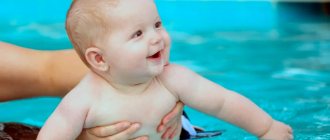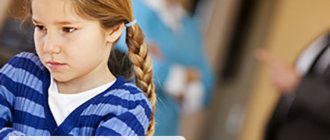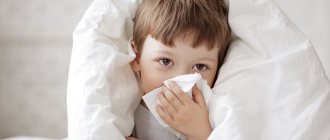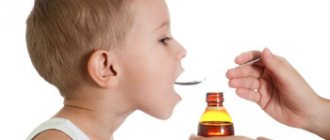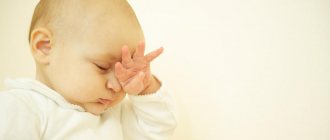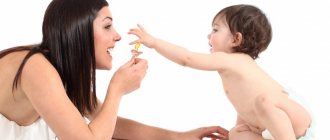What is hardening?
Hardening is an important element of a healthy lifestyle among people of all ages. However, this is especially important for children whose bodies have not yet developed the ability to respond quickly and quickly to sudden environmental changes. Children overheat or experience hypothermia more quickly. Moreover, they are more sensitive to changes in air humidity, especially to its increase, or to UV radiation. Children who have been hardened since childhood get sick less often and adapt more easily to kindergarten. During the week, the child spends most of his time in kindergarten or school. Ways to strengthen children's immunity largely depend on the knowledge of teachers and parents about strengthening their health. Hardening can be defined as a system that is an integral part of the physical education of children. Not only in kindergarten, but also at home, hardening is a powerful remedy that reduces the incidence of colds by 2 to 4 times.
Hardening is the creation of body strength to resist painful influences. It provides protection from diseases and epidemics, ridding the body of pathogenic microbes, helping you to more easily endure troubles, hardships and suffering, since it is synonymous with health. But hardening is not a cure for diseases, but a preventive treatment. A hardened person easily tolerates not only heat and cold, but also sudden changes in ambient temperature, which can lead to a weakening of the body's defenses. Hardening promotes overall strengthening of the body, leads to increased efficiency of the central nervous system, as well as normalization of metabolism and improvement of blood circulation.
We and our children
Authors : Nikitin B. and L.
Right there, my daughter takes “air baths” - after all, she’s wearing only a vest. After six or seven feedings of such “baths,” an hour and a half to two hours are gained on the first day. And later, after two or three weeks, after each feeding she also “walks”, most often completely naked. This is another hour or two, for a total of three hours a day, 20-30 minutes per “session”. The duration of the “sessions” depends only on the baby’s well-being: if you like it, lie back in good health. But then she fussed, made a whiny grimace, even began to whine - I take her, hold her over the basin until she does everything she needs to do, and then wrap her up for sleep: a vest, a diaper, a large diaper and a warm diaper for the legs that I will definitely warm it with my palm. If they remain cold, then the baby will have a restless sleep, she can easily get wet (for some reason boys are especially different in this), so from the first day of being in the house, and in the warm season and on the street: while the baby is not sleeping, he is either naked , either in a vest or (older) in panties. In this case, the temperature in the room or outside can fluctuate from approximately plus 15 to plus 25 degrees, and depending on the temperature, the duration of the “air baths” also changes. If it’s cold, the baby will rather “demand” being wrapped up, but if it’s nice, he’ll happily dangle his arms and legs until he wants to sleep. B.P.: We remember that at first we were very surprised: the arms and legs were cold, the heels would even turn bluish, but at least the baby would care! He lies there cheerfully, and that’s all. Only later did we learn that there was no need to be afraid of cold heels. This is simply an external manifestation of adaptive reactions to cold. This reduces the temperature difference between the skin and the air and sharply reduces heat transfer. And an increase in heart rate and increased muscle tone increases the formation of heat and restores the body's thermal balance. And all this turns out to be very necessary for the baby: the coolness invigorates and makes movements pleasant, and without clothes and diapers it’s easy to move, nothing gets in the way. The child masters various movements easier and faster, begins to sit down, stand up, and crawl earlier. This, in turn, leads to even greater temperature fluctuations: when he sleeps under a diaper or blanket, he is warm (33-34 degrees Celsius), and when he wakes up, he is turned around, and he immediately falls into room temperature (18-25 degrees Celsius ) - a difference is obtained (10-12 degrees). And if he was allowed to crawl on the floor (10-12 degrees Celsius), the difference is even greater. And so many times a day. To this were also added various “water procedures”: we washed, and, if necessary, washed the baby without heating the water - from the tap, but not directly under the stream, but from the palm of our hand, scooping up a handful of water. The first time the baby might shudder slightly, but on the second or third day he got used to it and did not express displeasure, even if the water was colder than usual.
published 02/17/2007 12:27 updated 05/13/2011 — Child care, hygiene, Growth and development, Bathing and swimming
- ← Previous
- Next →
When can you start hardening?
You can start hardening children after the first week of life, after examining the baby by a pediatrician. The most favorable time for hardening is summer. Hardening procedures should begin during the period of remission of a chronic disease and no earlier than a month after suffering an acute inflammatory disease.
Hardening should be carried out regularly, since the training effect of the hardening load is achieved in several months (on average 2 months), and disappears much faster - in 2-3 weeks. The main means of hardening are natural factors: light, sun, air, water and diet. In this case, the best effect is achieved when using a complex of hardening techniques - a combination of air and sun baths with water procedures, a combination of general and local hardening.
Sun hardening.
Ultraviolet rays actively affect the immunological resistance of the body. However, the younger the child is, the higher the sensitivity to ultraviolet rays. Therefore, sunbathing is contraindicated for children under one year of age. They are prescribed with caution to children from 1 to 3 years of age, and only at an older age they are carried out quite widely. Scattered sunlight contains a lot of ultraviolet and relatively few infrared rays, which cause overheating of the child’s body, which is especially dangerous for children with increased neuro-reflex excitability.
In autumn, winter and spring, direct sunlight does not cause overheating, so getting it on the child’s exposed face is not only acceptable, but also necessary. In summer, it is recommended to carry out light-air baths at an air temperature of 22 ° C and above for infants and at 20 ° C for children 1 - 3 years old, preferably in calm weather. In central Russia, light-air baths are best carried out from 9 to 12 noon, in hotter climates from 8 to 10 am. The duration of the first bath for infants is 3 minutes, for older children - 5 minutes. with a daily increase to 30 - 40 minutes or more. An absolute contraindication to sunbathing is an air temperature of 30°C or higher. After sunbathing, children are prescribed water treatments. Since the body becomes hypothermic when the skin is wet, it is imperative to dry the child, even if the air temperature is high.
Basic principles of hardening
A gradual increase in the intensity of hardening activities, because insufficient loads reduce the result of hardening, and overdoses prevent it. Regularity and continuity of hardening procedures throughout life. Short but frequent hardening procedures are more effective than long but rare ones. It is necessary to take into account the individual characteristics of the child when selecting hardening procedures and the correspondence of the loads to the functional capabilities of the body.
Air baths
Air.
The most popular hardening method is called “air baths”. This is hardening with fresh air. At this time, freely moving air is directed towards the body. The body, as you understand, should be minimally dressed, so you shouldn’t take them in crowded places - they won’t understand. And in some countries they will even imprison you.
Benefits of air baths:
- Air baths perfectly restore the functioning of the nervous system.
- after a long working day, after intense mental or physical work, it is very useful to take air baths. Surprisingly, after a while the tension goes away, the mood improves, and the general condition returns to normal.
- improved sleep is one of the most pleasant effects of air baths
- blood pressure returns to normal, the functioning of the heart and blood vessels improves.
- air, especially fresh air, is rich in oxygen, light phytoncides and ions, as well as other beneficial substances needed by our body.
- air baths are the softest of all currently existing methods.
After a long working day, after intense mental or physical work, it is very useful to take air baths.
(Illustration source: sfw.so)
Why do air baths have such a positive effect:
- Our skin has the ability to breathe freely while taking air baths. All the time, all day long, the skin is covered with a lot of clothes. Sweatshirts, jeans, T-shirts prevent our skin from breathing freely. Oxygen comes in very small quantities.
- Our body experiences temperature stress. This happens when, after removing clothes, the skin feels a sharp decrease in t.
Our skin has the ability to breathe freely while taking air baths.
(Illustration source: fishingplus.ru)
Air baths:
- Baths can be taken completely undressed or only partially dressed. The effect will still be positive.
- Air baths are divided according to t into heat and air. A lukewarm air bath is one in which t > 20 degrees C. Cool air baths have a temperature of 17-20 degrees. Cold baths include t < 16 degrees C.
- There are also contrasting air baths. They take place in a confined space. When you undress and then open the windows, you are in the cooling phase. When the windows close, this is the warming phase. It is required to alternate phrases several times.
There are also contrasting air baths. They take place in a confined space.
(Illustration source: photo.99px.ru)
Rules for taking air baths:
- The best way to take these very air baths is in motion. Although you can sit or lie down. The main thing is to quickly take off your clothes. But as soon as a feeling of chills begins to appear, the skin becomes covered with pimples, you should quickly get dressed.
- Clothes should be warmer than everyday clothes. Sweating should not be allowed.
- Place a folded towel under your head.
- The most beneficial baths are taken before sunrise. But it is allowed until 10 am.
- The procedures should be carried out for a month. Every day. Then it is recommended to take a break of three days. Then you can start again. Repeat 3 times.
- If your liver or other organs are sick, you can continue to take air baths. If everything is in order with health, the duration is thirty minutes at a temperature of fifteen to twenty degrees. Add 10-15 minutes every day until the procedure takes two hours.
The best way to take these very air baths is in motion.
(Illustration source: office43.ru)
Cautions:
- Do not take air baths at low temperatures with high humidity.
- Procedures cannot be carried out outdoors if there is precipitation or fog.
- Care must be taken when taking air baths in infants. They have poor thermoregulation. The younger the child is, the weaker the thermoregulation. First you need to teach your child to breathe fresh air. Walk three hours a day, do not swaddle heavily. The baby should receive vitamins and minerals according to age.
Side effects:
- Air baths at the very beginning can cause not very good sensations in the body.
- There may be abdominal pain.
- But this is only the beginning of treatment. Over time, the sensations gradually disappear.
Kuznetsova N. S.
01.09.2021

